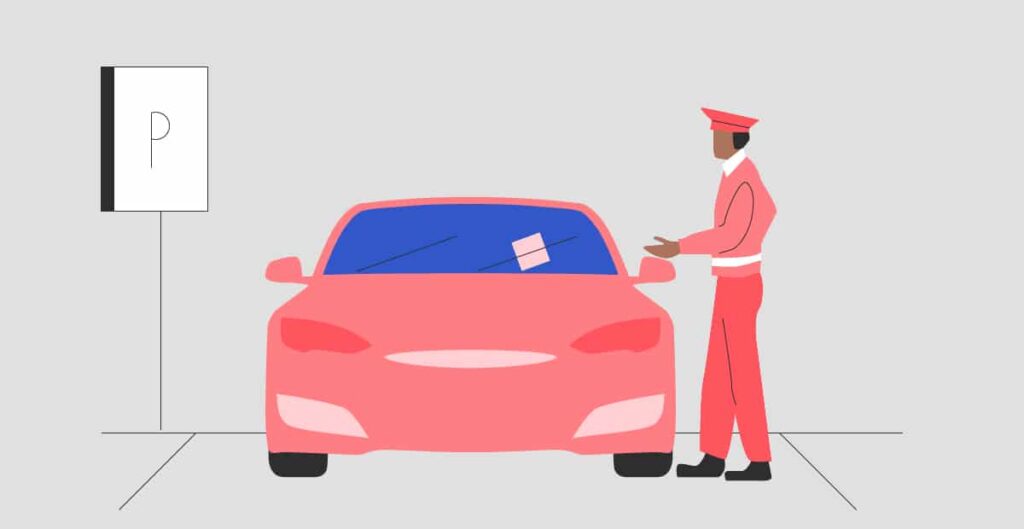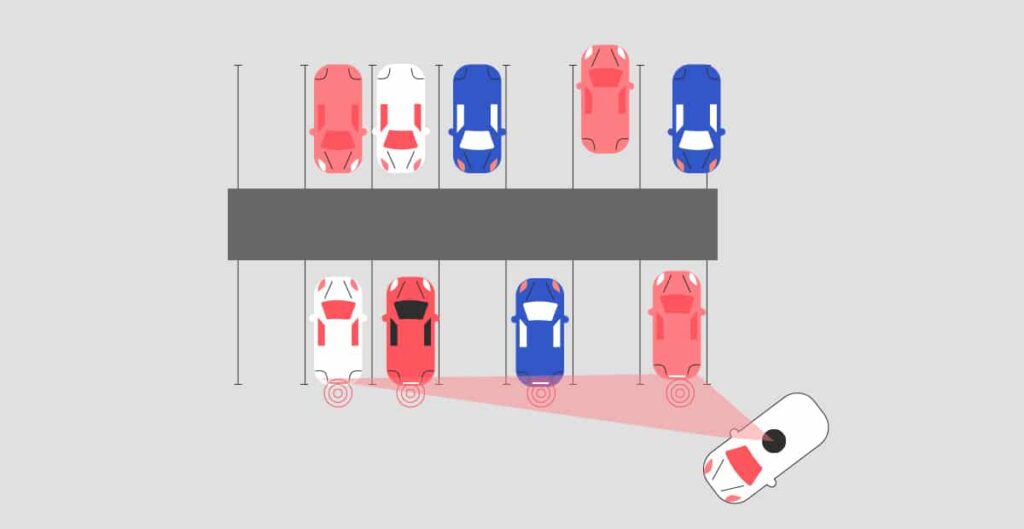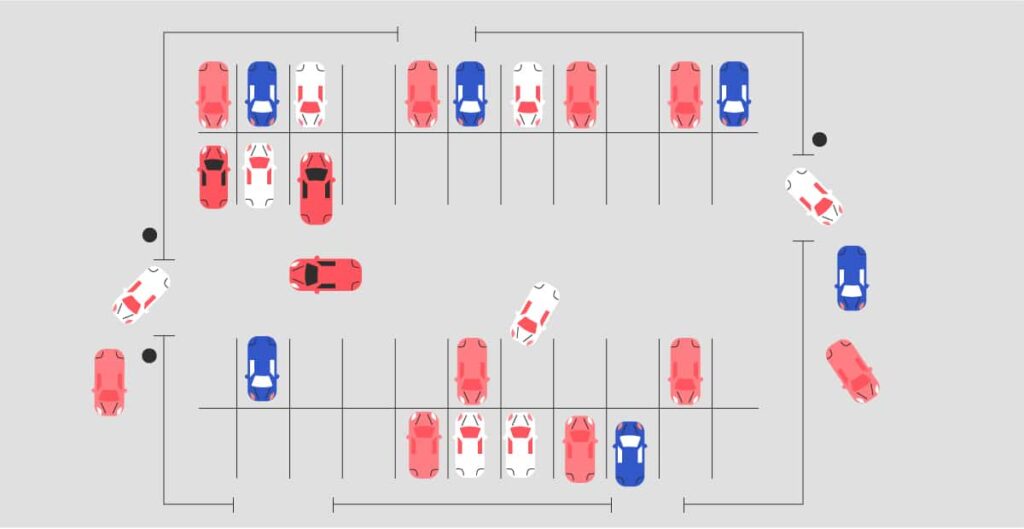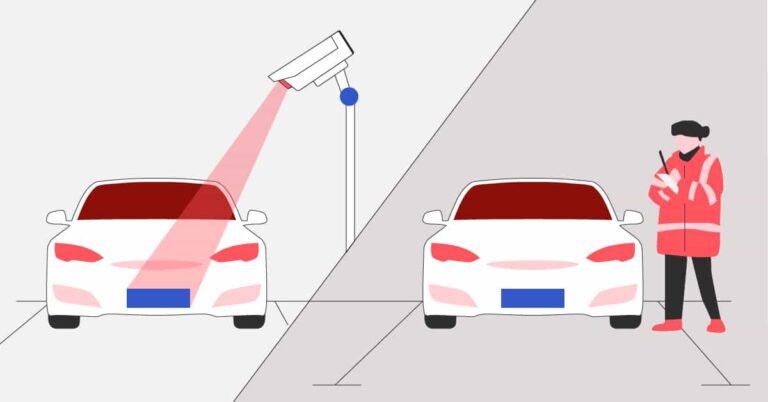Manual or automatic parking enforcement?
Your choice of parking enforcement systems can have a big impact on your day-to-day operations, your bottom line, and even the customer experience. The modern parking garage has parking management solutions specifically configured for its unique needs—and that includes the systems you use to ensure you’re being paid fairly and on time.
Why Focus on My Enforcement?

Operators who don’t emphasize enforcement can be prone to scams and not being paid what they’re owed. Enabling good enforcement can lead to greater efficiency, more accurate violations, and a smoother process that ensures you’re being treated fairly.
It’s in your best interest to ensure that you have all of the pieces of the parking puzzle in your asset. A good enforcement strategy can complement strong access and entry controls to give a clear picture of what’s happening. Consistency is key here, and even your customers will feel the difference if you have a smooth operation in place that holds everybody accountable.
The Difference Between Manual vs. Automatic Parking Enforcement

Manual parking enforcement relies on staff and human capital to check for violations. It’s the process of a person going from car to car and matching it to your records. If violations are found, notices are issued. The advantage here is the ability for humans to discern the nuances of different situations that may be overlooked by automatic enforcement and not having to install new systems required for automation such as cameras. Conversely, your staff may not check fast or frequently enough to determine if a person quickly parked and left before they were even recognized as a customer. Human error is a factor here.
Automatic parking enforcement utilizes software and hardware like cameras to detect when customers enter and to periodically check the asset to ensure nobody is overtime or parked illegally. It’s powered by intelligent software like ours to compensate for what might happen with human error in manual enforcement. Cameras with license plate recognition (LPR) will do the work of scanning each plate to check the time entered and duration parked. It’s also normally attributed with gateless parking assets, though there are situations where it’s just as useful for gated systems, which we’ll get to a bit later on.
Which Parking Enforcement System Is Right for Me?

To answer this question, we’ll break down when automatic enforcement might not be the best solution.
The main criterion for manual vs. automatic is this: Are you able to control traffic flow? If you’re unable to keep track, direct, or scan each point of access in your asset, manual enforcement may be your best bet.
This is because automatic enforcement depends on what your vision technology can see. If you don’t have visibility on who is accessing your asset at each point, people can slip by. You might have entrances and exits in the front where cameras can go, but also a separate back alley exit—that will likely lead to headaches. As a way to rectify this security hole, you could configure or change your access so that it’s suitable for LPR.
Another reason why you might want to stick to manual is if you’ve got more than the usual amount of scamming going on. One example is for operators who work in states that don’t require front and back license plates. A common scam in these areas is parking so that the one license plate isn’t visible to cameras. This requires a person to do the enforcement and look up the car by other means (VIN number, make/model, etc.).
Lastly, you might live in a state that doesn’t allow private operators access to owners’ data. There are some areas where regional rules prohibit the operator from getting the crucial customer information needed for automatic enforcement. You can still use vision technology and cameras to set up cloud-born auto payments in these situations, but not enforcement.
For All Else—There’s Auto Parking Enforcement
If none of the above applies to you, then you’re a great candidate for automatic enforcement. Along with the other security necessary for any successful operation, auto enforcement completely changes the game. It allows you to keep regimented schedules for tracking and checking on customers’ statuses. Another major benefit is that it can pick up the slack when humans don’t catch a person if they park and leave too quickly soon after. Particularly in gateless assets, auto enforcement will ensure that each person is accounted for and more revenue is generated with more accurate violations.
However, auto enforcement can be used in a gated parking lot, where people still do the darndest things. Some examples include parking over multiple spaces, taking up handicap spots, or being in a space reserved for EVs. While your staff could do their rounds, an automatic system would make the process much more efficient.
The choice is relatively simple to make. Unless you have any big barriers like regional regulations or an unsuited asset layout, automatic enforcement can save you time and actually increase revenue. Need some help deciding which is best for you? Reach out to us to schedule a consultation.
Join the Parking Revolution, Subscribe
to Our Newsletter
We’re disrupting the parking industry because we believe our customers, consumers, and cities deserve better.

